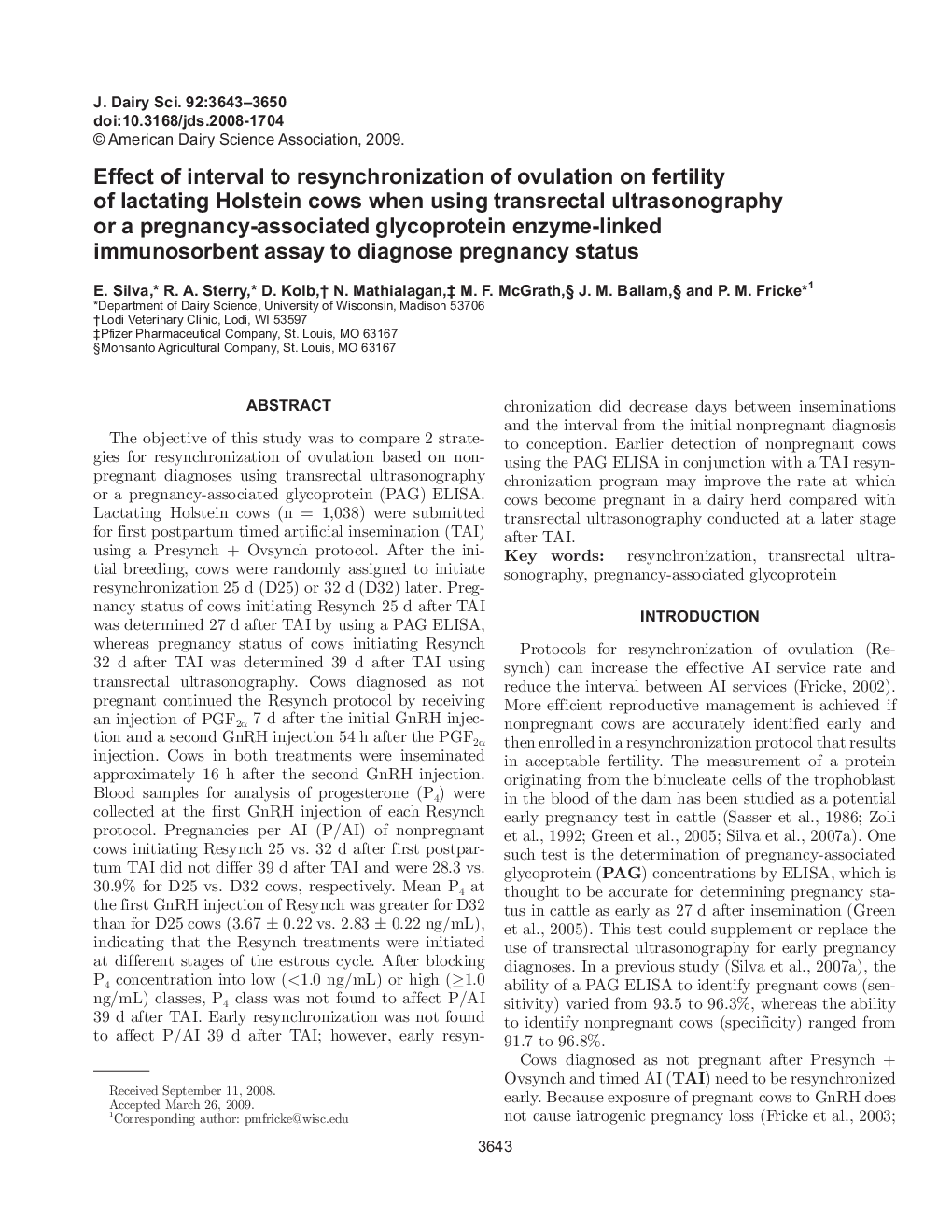| Article ID | Journal | Published Year | Pages | File Type |
|---|---|---|---|---|
| 2439043 | Journal of Dairy Science | 2009 | 8 Pages |
Abstract
The objective of this study was to compare 2 strategies for resynchronization of ovulation based on nonpregnant diagnoses using transrectal ultrasonography or a pregnancy-associated glycoprotein (PAG) ELISA. Lactating Holstein cows (n = 1,038) were submitted for first postpartum timed artificial insemination (TAI) using a Presynch + Ovsynch protocol. After the initial breeding, cows were randomly assigned to initiate resynchronization 25 d (D25) or 32 d (D32) later. Pregnancy status of cows initiating Resynch 25 d after TAI was determined 27 d after TAI by using a PAG ELISA, whereas pregnancy status of cows initiating Resynch 32 d after TAI was determined 39 d after TAI using transrectal ultrasonography. Cows diagnosed as not pregnant continued the Resynch protocol by receiving an injection of PGF2α 7 d after the initial GnRH injection and a second GnRH injection 54 h after the PGF2α injection. Cows in both treatments were inseminated approximately 16 h after the second GnRH injection. Blood samples for analysis of progesterone (P4) were collected at the first GnRH injection of each Resynch protocol. Pregnancies per AI (P/AI) of nonpregnant cows initiating Resynch 25 vs. 32 d after first postpartum TAI did not differ 39 d after TAI and were 28.3 vs. 30.9% for D25 vs. D32 cows, respectively. Mean P4 at the first GnRH injection of Resynch was greater for D32 than for D25 cows (3.67 ± 0.22 vs. 2.83 ± 0.22 ng/mL), indicating that the Resynch treatments were initiated at different stages of the estrous cycle. After blocking P4 concentration into low (<1.0 ng/mL) or high (â¥1.0 ng/mL) classes, P4 class was not found to affect P/AI 39 d after TAI. Early resynchronization was not found to affect P/AI 39 d after TAI; however, early resynchronization did decrease days between inseminations and the interval from the initial nonpregnant diagnosis to conception. Earlier detection of nonpregnant cows using the PAG ELISA in conjunction with a TAI resynchronization program may improve the rate at which cows become pregnant in a dairy herd compared with transrectal ultrasonography conducted at a later stage after TAI.
Related Topics
Life Sciences
Agricultural and Biological Sciences
Animal Science and Zoology
Authors
E. Silva, R.A. Sterry, D. Kolb, N. Mathialagan, M.F. McGrath, J.M. Ballam, P.M. Fricke,
